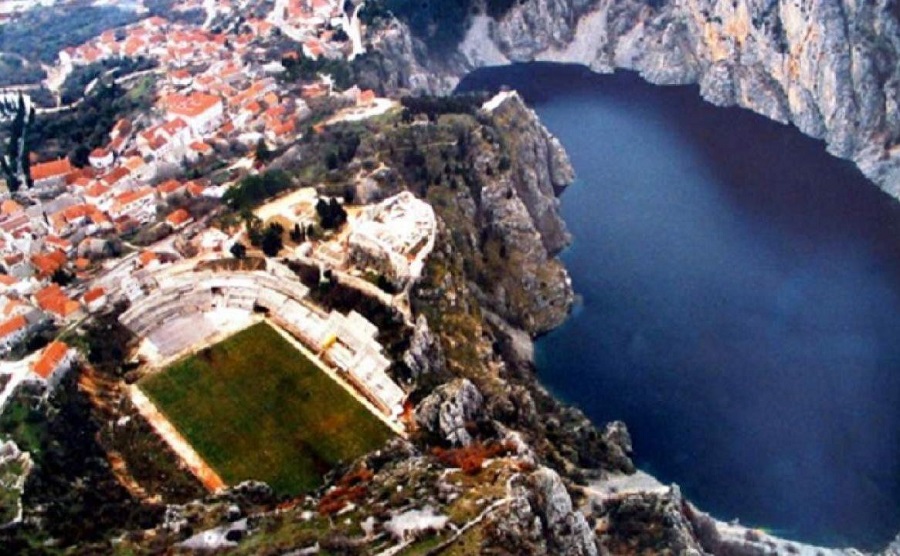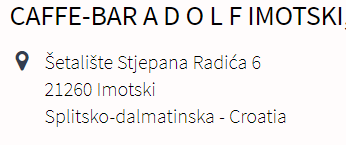Hercegovac Begs Cro PM 'Open Borders So I Can Send My Wife To Her Mother'
January 29, 2021 – Lockdown is apparently taking a toll on one Hercegovac. The man from Široki Brijeg wrote to Croatian Prime Minister Andrej Plenković and begged him to reopen the borders between Croatia and Herzegovina so he could eject his wife from the family home for a month and send her to his mother-in-law's
The message from Hercegovac Ante Zovko (Ante Marinkov) was reposted on the Facebook page Imocki crnjaci where it picked up some 3 thousand likes in less than 6 hours.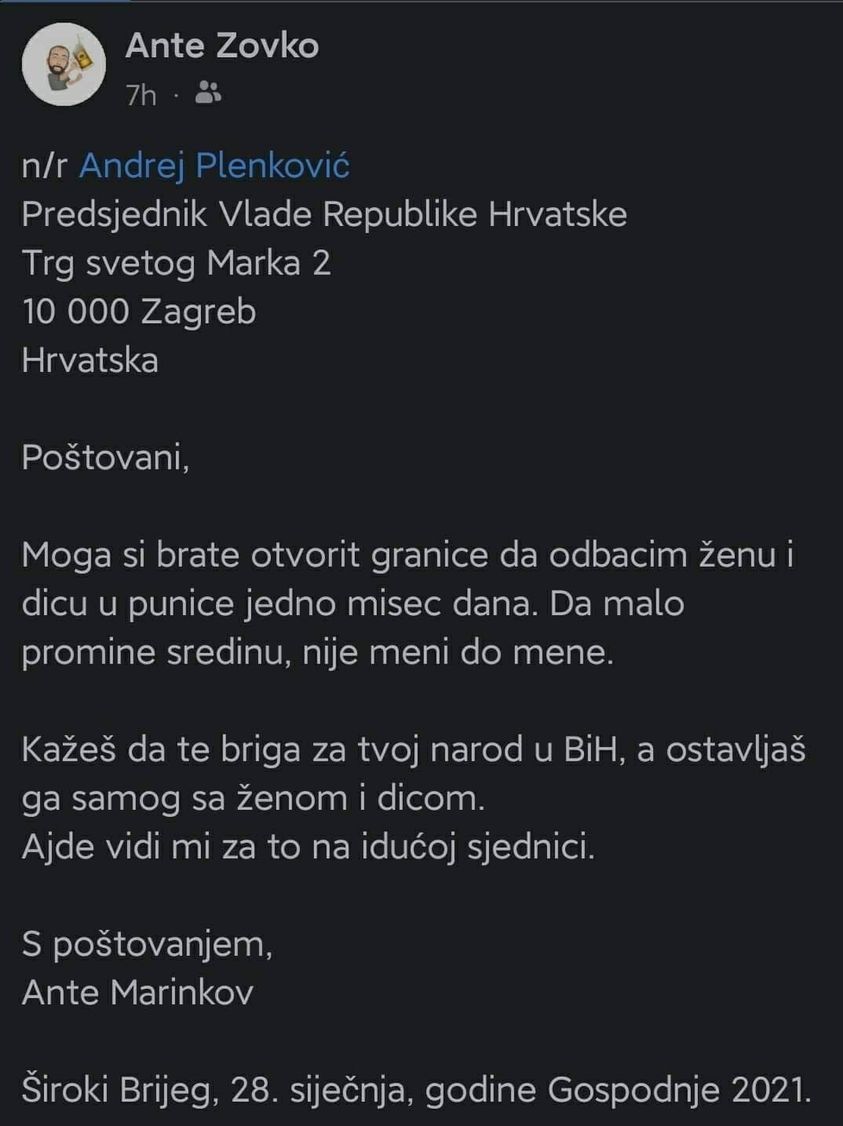
The town, Široki Brijeg, where this particular Hercegovac (a man from Herzegovina) lives is just 35 kilometres from the border with Croatia. Lots of Croatians live in this area, including this Hercegovac, his wife and his child. But not, it would seem, his wife's mother, who apparently lives in Croatia.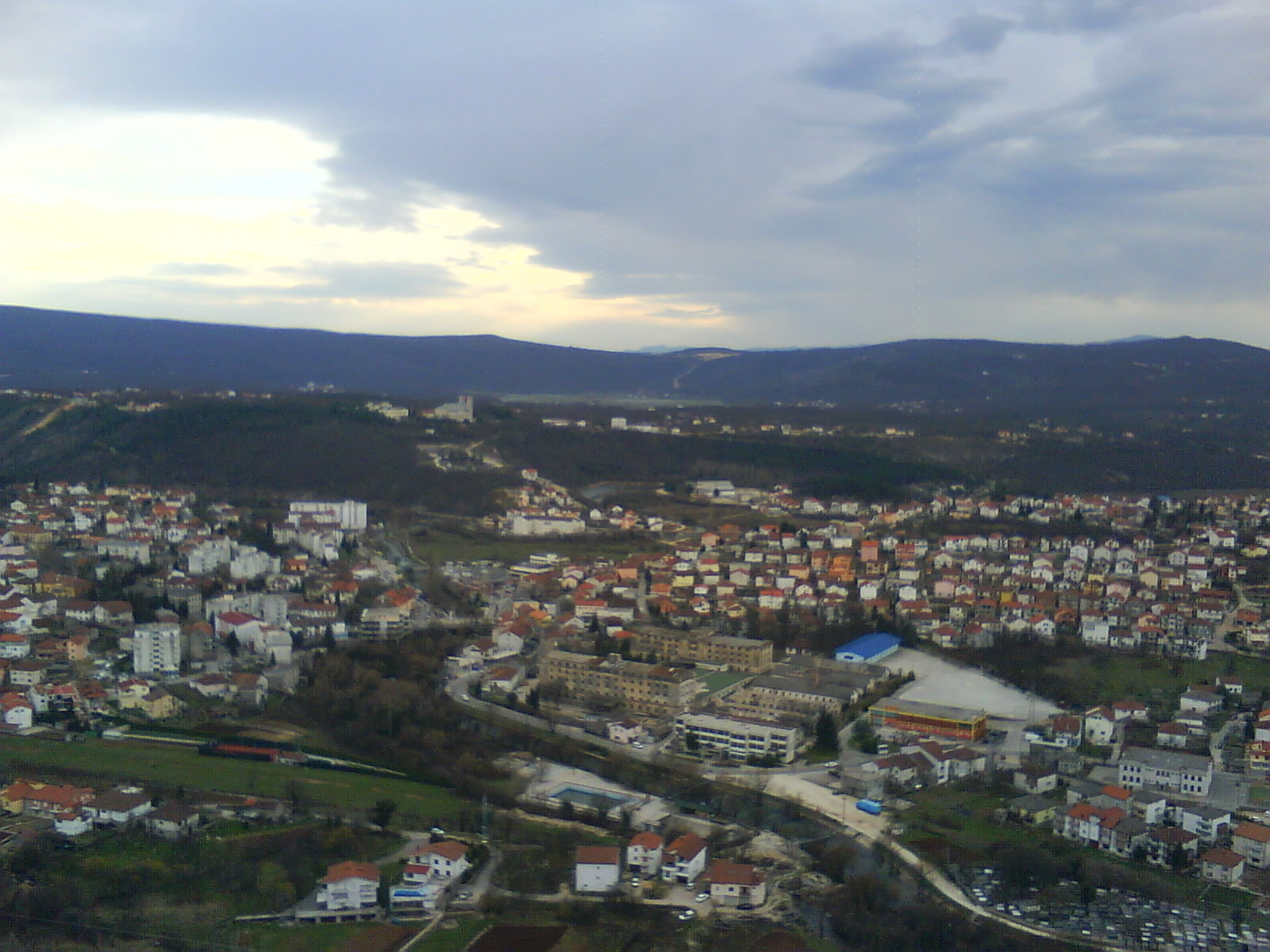 Široki Brijeg in Herzegovina, around 35 kilometres across the border from Croatia © Anto (talk)
Široki Brijeg in Herzegovina, around 35 kilometres across the border from Croatia © Anto (talk)
The Hercegovac's reason for wishing to eject his wife and child for a month was to change up the atmosphere for a time. One presumes he was not being entirely serious with his request.
The Hercegovac is not the first man to seemingly reach the end of his tether while restricted to staying in the family home. In April 2020, after just one month of being housebound, a man from a village near Osijek in Slavonia left his wife in the family home and went to live nearby in a tent.
Speaking anonymously at the time, the man's neighbour told the local SiB.hr news portal the couple have been happily married for 30 years. But, it seems the pressure of being around each other so closely during the lockdown was too much even for their strong union.
The neighbour was happy to report that since his friend pitched his tent in the nearby locale, relations between the man and his wife had actually returned to their usual levels of warmth and friendliness. The wife even came regularly to visit her husband in his tent. © John Waring
© John Waring
"My neighbour has been in his tent for a few days now,” he told the portal back in April. “He puts up a table and chairs in front. Occasionally our other neighbour comes over to drink some rakija (with him). I visited him too.”
The neighbour said his friend had quit the family home due to boredom more than anything else. Even after being happily married for 30 years, being around each other 24 hours a day was apparently just too much.
Perhaps in this more chivalrous response from the Slavonian man, Hercegovac Ante Marinkov could take some inspiration? After all, it's surely easier if one person departs from his family home in order to change the atmosphere than if two are forced to leave. Ante should find a nice spot in the fields nearby – not too close – and simply pitch up a tent. Problem solved! If he's lucky, his wife might come to visit bringing rakija.
Heavy Rain Fills 11 Imotski Lakes To Almost Record Highs
January 20, 2021 – Famous for its Red and Blue lakes, there are in fact 11 Imotski lakes located around the Dalmatian hinterland city. Due to high rainfall, their rising water levels are nearing the highest point in living memory
Inaccessible without advance preparation and experience, visitors to the Red Lake in Imotski can only admire the spectacle from the upper edges. The lake is referred to as 'red' because of the red clay colour of the rock face which surrounds the water below. There's a challenge traditionally tasked to those brought here – see if you can throw a stone from the brim into the water. It's harder than it looks. The walls are steep and wide, the water a good long way below. Except for now. Like the water in all 11 Imotski lakes, the water level is currently at the highest point is has been for as long as anyone can remember. The height of the water in the Red lake alone exceeds 309 meters.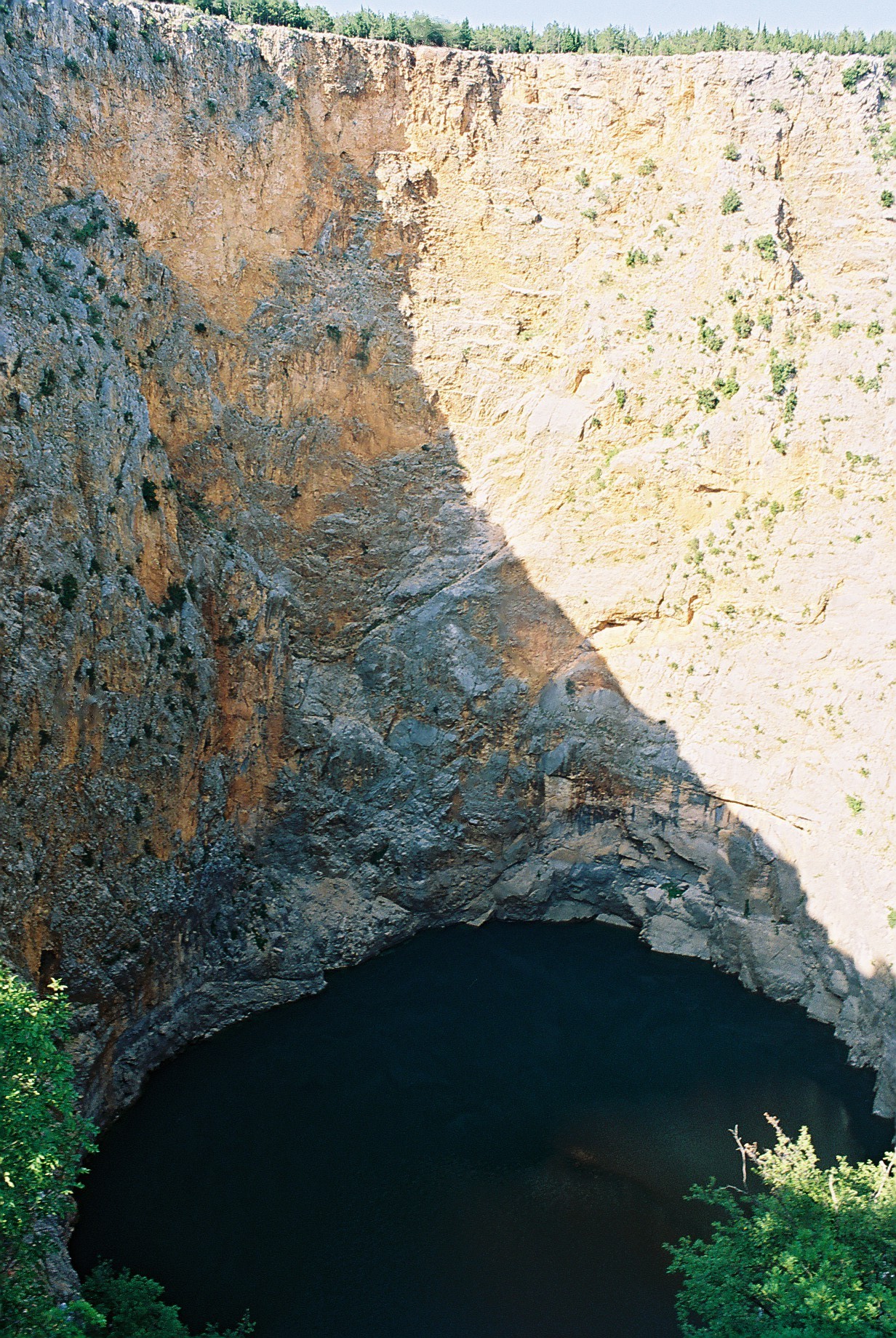 Imotski's Red Lake © Tieum512
Imotski's Red Lake © Tieum512
Heavy rainfall over recent months is the cause for the high and rising water levels in the 11 Imotski Lakes. In December 2020, about 700 litres of rain per square metre was recorded in the area, practically filling all 11 Imotski lakes, as well as the river Vrljika.
High water levels are recorded in Galipovac Lake, Lokvičićko Lake (or Mamić Lake), Prološki lake and the Knezović lake. The water level in the Vrljica River is still high. Along with the picturesque Green Lake, named after the beautiful, icy turquoise green appearance of its water, the 11 Imotski lakes are an appealing topography for hikers, walkers and climbers to explore. Accurate data on the height of the water in Imotski's Blue and Red Lakes was recorded within the past few days.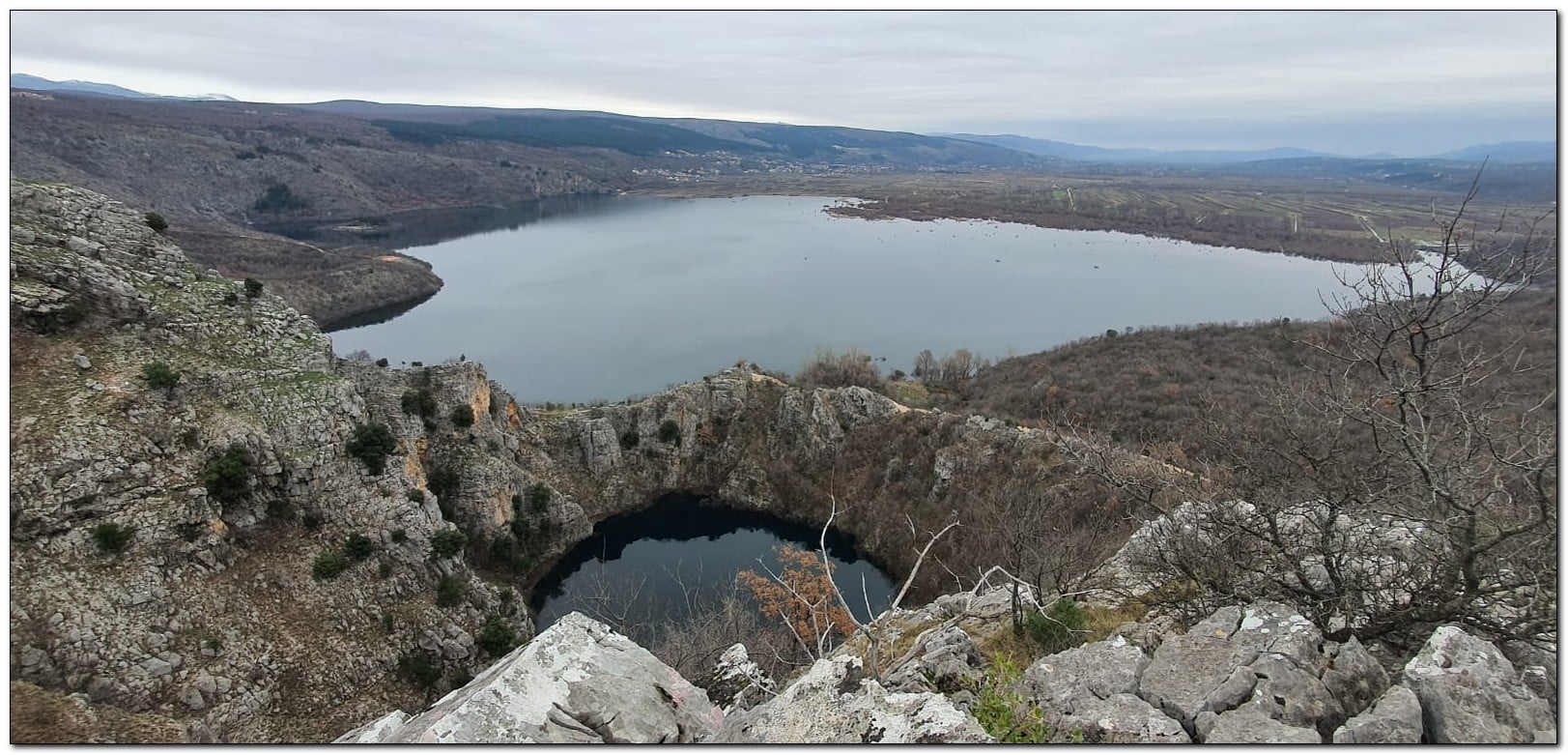 Photo of Lokvičićka jezera, one of the 11 Imotski lakes, taken by Josipa Rimac Vlajčić and a team from the Imotski Mountaineering Society during a mid-January expedition © HPD Imotski Facebook
Photo of Lokvičićka jezera, one of the 11 Imotski lakes, taken by Josipa Rimac Vlajčić and a team from the Imotski Mountaineering Society during a mid-January expedition © HPD Imotski Facebook
In the Blue lake – the one closest to Imotski centre and a popular summertime swimming and recreational site - the current water level is at 91.5 metres. It is still rising. Whether the water level will reach the record 102 metres recorded in 2012 will depend on rainfall within the region over coming days. Rains do not necessarily have to fall in Imotski to fill this or some of the other 11 Imotski lakes – they are fed by underground channels which flow from Bosnia.
Reporting on the rising water in Slobodna Dalmacija, local photographer and writer Braco Cosic informed that Imotski-based surveyor Ante Škeva had measured the current water level of Red Lake as a quite considerable 309 metres on Tuesday. If there was ever a time to take on the challenge of hitting its water surface with a stone, it is surely now.
Geological Park Biokovo Imotski Lakes In UNESCO Network In Two Years
December 9, 2020 – After Papuk Nature Park and Vis Archipelago, Croatia will soon get another geopark under UNESCO protection. If everything goes according to plan, Geological Park Biokovo Imotski Lakes' proclamation is expected in the next two years.
As Lokalni.hr reports, the National Commission for UNESCO Geoparks of the Republic of Croatia sent the UNESCO Council of World Geoparks based in Paris documentation for registration and accession of the Biokovo-Imotski Lakes Geopark area to the network of UNESCO World Geoparks.
A unique area of Dinaric karst
"This completes a significant chapter on our path to the ultimate goal of becoming a Geopark under UNESCO protection," said Luka Kolovrat, director of the Imotski Tourist Board Imota.
The arrival of UNESCO evaluators is expected in the summer, and if everything goes according to plan, the Biokovo-Imotski Lakes Geopark's proclamation will be in the next two years.
"The initiative was launched in 2018 when we reported the Imotski Lakes Geopark project to the National Commission, and at the same time, the Biokovo Nature Park had a similar initiative. The position of the Commission was to unite the initiatives and to approach this project together," says Kolovrat.
There are many reasons for this. One of them is that the area of Imotski Krajina (Imotski region) with the Biokovo Nature Park is a geologically, geomorphologically, and unique landscape area of the Dinaric karst. Thus a joint application would use the potential of both areas for the benefit of the local community.
"At the end of 2018 and in 2019, the City of Imotski carried out a very complex and comprehensive geological research of the area of Imotski Krajina. It was the basis for future applications. The Geological Institute prepared the geological brochure of Imotski Krajina. At the same time, we conducted intensive negotiations with representatives of PP Biokovo on a joint application, defining names, headquarters, borders, coverage, management of Geopark, etc. At the end of 2019, the geological brochure was presented to the public, and the association Geopark Imotski Lakes was founded, which took over the management, operational affairs, and coordination from the Imotski Tourist Board," Kolovrat states the chronology.
In May this year, they sent a letter of intent to the Ministry of Economy and Sustainable Development. In July, they presented the project, after which they received a letter of support from them.
A piece of the planet of inestimable wealth
The next step is the arrival of UNESCO evaluators in the summer, and until then, they have a lot of work to do.
"In the next period, we need to implement the activities from the management plan: mark about a hundred sites that we have identified as geological, natural, and cultural sites, mark geological trails, do training for agencies, renters, family farms who should become partners of Geopark, create a bilingual website, promotional video, print brochures and various promotional materials," announces Kolovrat.
UNESCO Geoparks are unique geographical areas of international importance governed by a holistic concept of protection, education, and sustainable development.
"The UNESCO brand will lead to the recognition of our area at the global level. The creation of innovative crafts and new jobs encourages new sources of income as part of geotourism, strengthening the local community. At the same time, the geological, natural, and cultural heritage of the area remains protected. We believe that this piece of a planet of inestimable wealth on which we have the privilege to live, and we are its heirs, deserves to become part of the UNESCO family to the pride of us and the generations to come," says Kolovrat.
Geological treasury of Croatia
Due to its geological diversity and numerous fossil finds of organisms from the Pannonian Sea, the Papuk Nature Park was the first Croatian Geopark under UNESCO protection. Papuk is also in a nature park category since 1999, and the first geological natural monument in the Republic of Croatia is located in the Park.
Last year, UNESCO added three European sites to its geological parks, including the Vis Archipelago. In the geological past 220 million years ago, a magmatic breach formed the present islands of Jabuka, Brusnik, Biševo, and Palagruža. Palagruža is also geologically the oldest island in the Adriatic, which, like the island of Brusnik, is continuously growing under the influence of tectonic activity.
For the latest travel info, bookmark our main travel info article, which is updated daily.
Read the Croatian Travel Update in your language - now available in 24 languages
"Road to Life": Miljenko and Friends Pedalled to Split for Children Suffering from Malignant Tumors
October 14, 2020 - At the Sanus Association, Split-Dalmatia County Prefect Blaženko Boban welcomed three super marathon cyclists - Tomislav Mrkonjić, Marko Marić, and Miljenko Mrkonjić - on their 1,500-kilometer-long humanitarian "Road to Life" from Frankfurt to Imotski.
The money raised in this commendable action will be donated, and half of the amount is intended for "Sanus", the club of parents of children suffering from malignant diseases.
As Slobodna Dalmacija reports, Miljenko Mrkonjic, a 26-year-old young man from Zmijavec near Imotski, was born and lives in Germany. As a boy, he contracted lymph node cancer and embarked on a difficult and uncertain battle with a malignant disease with his parents.
The effort paid off, and family friends and strangers came to the rescue. Ten years later, Miljenko is close to fulfilling his life vow, so he sat on a bicycle with two friends in Frankfurt, and today he arrived in Split. His destination is - Imotski.
"I want and hope to attract people's attention, to involve them as much as possible, and to help this action with my donations. Just one call to my Tomislav was enough and as a real man, he bought a plane ticket, flew to Frankfurt, took a bicycle, and trained with Marko.
In the first days, we collected more than 6000 euros. There will be more and that makes us happy. I want to be a pebble in the mosaic of goodness and contribute to at least help a child and his parent in that fight. Because treating that disease costs both nerves and money. I overcame my malignant disease exactly 10 years ago.
However, a lot of nice things happened to me during that period because I was lucky and had a lot of help from all sides. The money we will collect together will go to the associations "Sanus" in Croatia and "Hilfe für krebskranke Kinder" from Frankfurt. These two associations are selflessly fighting for a better tomorrow every day and I am very grateful to them for that", said Miljenko Mrkonjic.
Diligent travelers have come close to the finish line, and we can conclude that perseverance pays off and that a good voice is heard far and wide.
For the latest travel info, bookmark our main travel info article, which is updated daily.
Read the Croatian Travel Update in your language - now available in 24 languages.
VIDEO: Football Match Played at Bottom of Blue Lake in Imotski for 15th Time
September 21, 2020 - The bottom of the Blue Lake in Imotski dried up at the end of August, which could only mean one thing - the traditional football match between the Vilenjaci (Elves) and Vukodlaci (Werewolves).
An Imotski tradition that has been held 15 times is a football match between the Elves and the Werewolves, played on the muddy bottom of the Blue Lake. While this spectacle is unique because of the makeshift football pitch, it is also special because there are no rules, and the result is always a draw, reports Dalmatinski Portal.
"It is a rivalry between those on the north and those on the east side of the lake. We Werewolves are charming people who would go to the other side of the lake and spend nights with fairies. After that, we didn't want to be with our wives anymore, so the mothers-in-law came up with the idea of waiting for the full moon when the fairies bathe in the lake; they bought that water and gave it to their daughters-in-law to spray on their chests," says the legend of the Werewolves, Petar Mustapic.
When the rifle fired, the teams descended to the bottom of the lake—the Elves on one side, and Werewolves on the other. The Werewolves' descent is accompanied by shouts and drums while they are greeted by the Elves with music and applause at the bottom. After presenting the teams, the mayor leads the kick-off.
Matches at the bottom of the Blue Lake have been played since the Second World War, and Sunday, this spectacle was held for the 15th time. Two halves of 30 minutes each are played, and the result is always a draw. Josko Mustapic explains why.
"If the hated enemy won, there would be blood up to the knees, so this way, we both win," he said.
Although they have no rules, that is no reason not to have a referee. And his job is particularly special - he hands out yellow cards that clearly say, 'Ne seri' and red cards that say, 'Ne pizdi.'
The role of the referee was taken over by Postenjak, and for this occasion, they even had VAR.
The last time the game was played at the bottom of the Blue Lake was in 2017.
For the latest travel info, bookmark our main travel info article, which is updated daily.
Read the Croatian Travel Update in your language - now available in 24 languages
Join the Total Croatia Travel INFO Viber community.
Never Watched Football at the Bottom of a Lake? Imotski. Sunday.
September 18, 2020 - What is the most unusual football match you have been to? Can you beat a game between elves and werewolves at the bottom of a lake? Welcome to Imotski!
I have heard of some quite unusual sports and sporting venues on my travels over the years, but nothing quite like this.
A football match at the bottom of a lake.
The location is the gorgeous Blue Lake of Imotski in inland Dalmatia, about 30 minutes by car from the Makarska coast. Ordinarily, the Red and Blue Lakes are the town's star attractions due to their undoubted beauty, but this Sunday, attention will turn to the Blue Lake for a totally different - and very bizarre - reason.
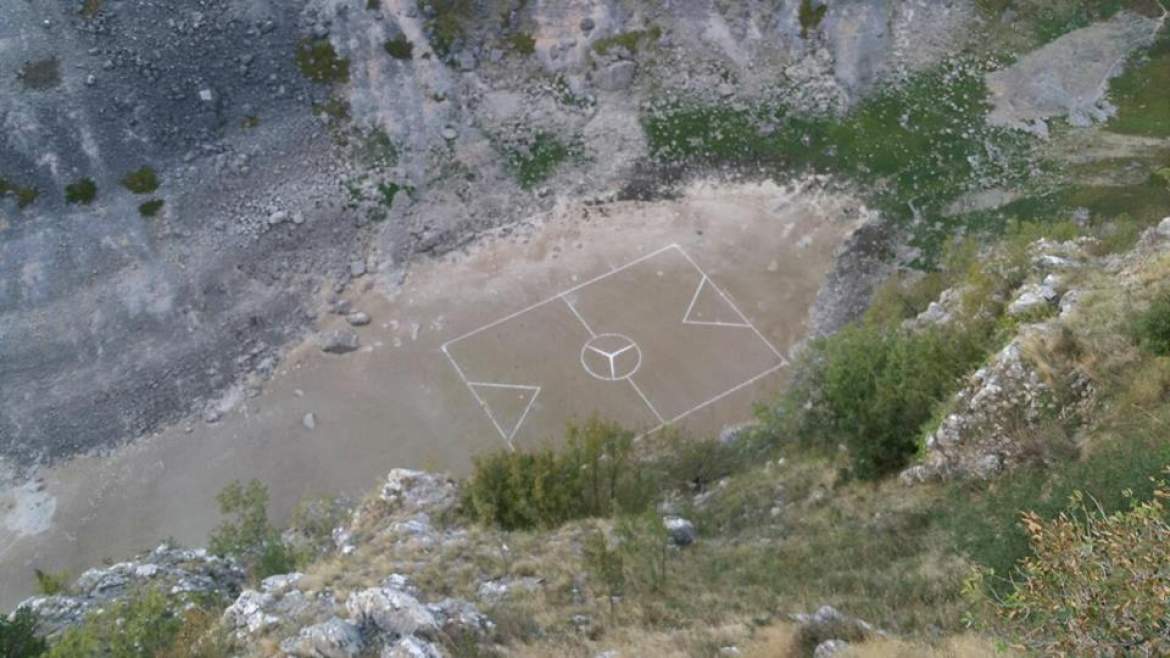
A football match at the bottom of the lake.
For the Blue Lake is no longer blue, at least for now.
In fact, the Blue Lake currently does not exist.
Depending on the time of year you visit, the level of the Blue Lake will be at a different level. It is at its fullest after the melting of snow on the nearby mountains, and its level is lowest after the hot summer season. And some years, when the summer has been particularly hot and rainfall particularly scarce, the unthinkable happens.
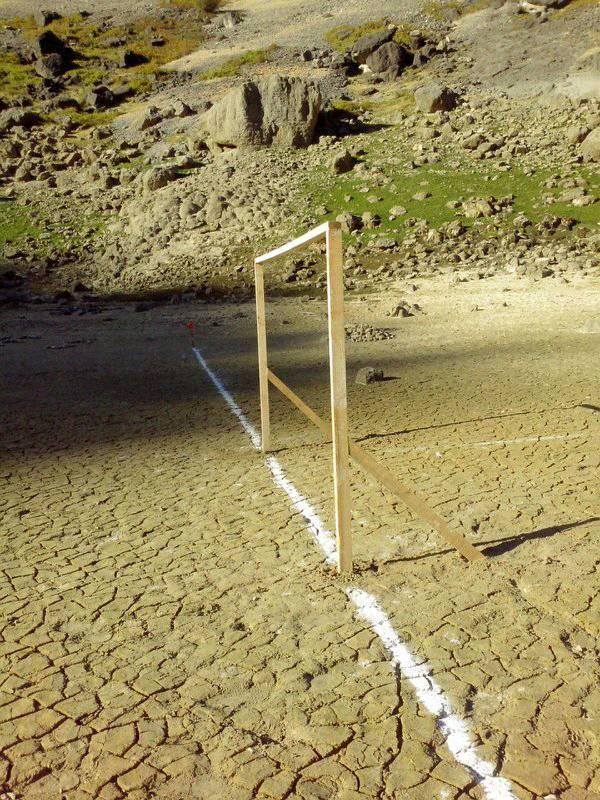
The Blue Lake disappears completely, leaving only a dry muddy bottom.
This used to happen about twice a century, but it has now happened four times in the last 30 year, including right now. And what happens when a lake dries up?
That's right - the elves and werewolves come out to play.
In what must surely be one of the most bizarre football matches and traditions on the planet, two teams known as the Vukodlaci (Werewolves) & Vilenjaci (Elves) take advantage of the dryness of this most unusual football pitch to battle for local bragging rights.
The match last took place in October, 2017, and you can watch an excellent video report of that occasion in the video above.
This year's match will take place this Sunday, September 20, with kick-off at 15:00.
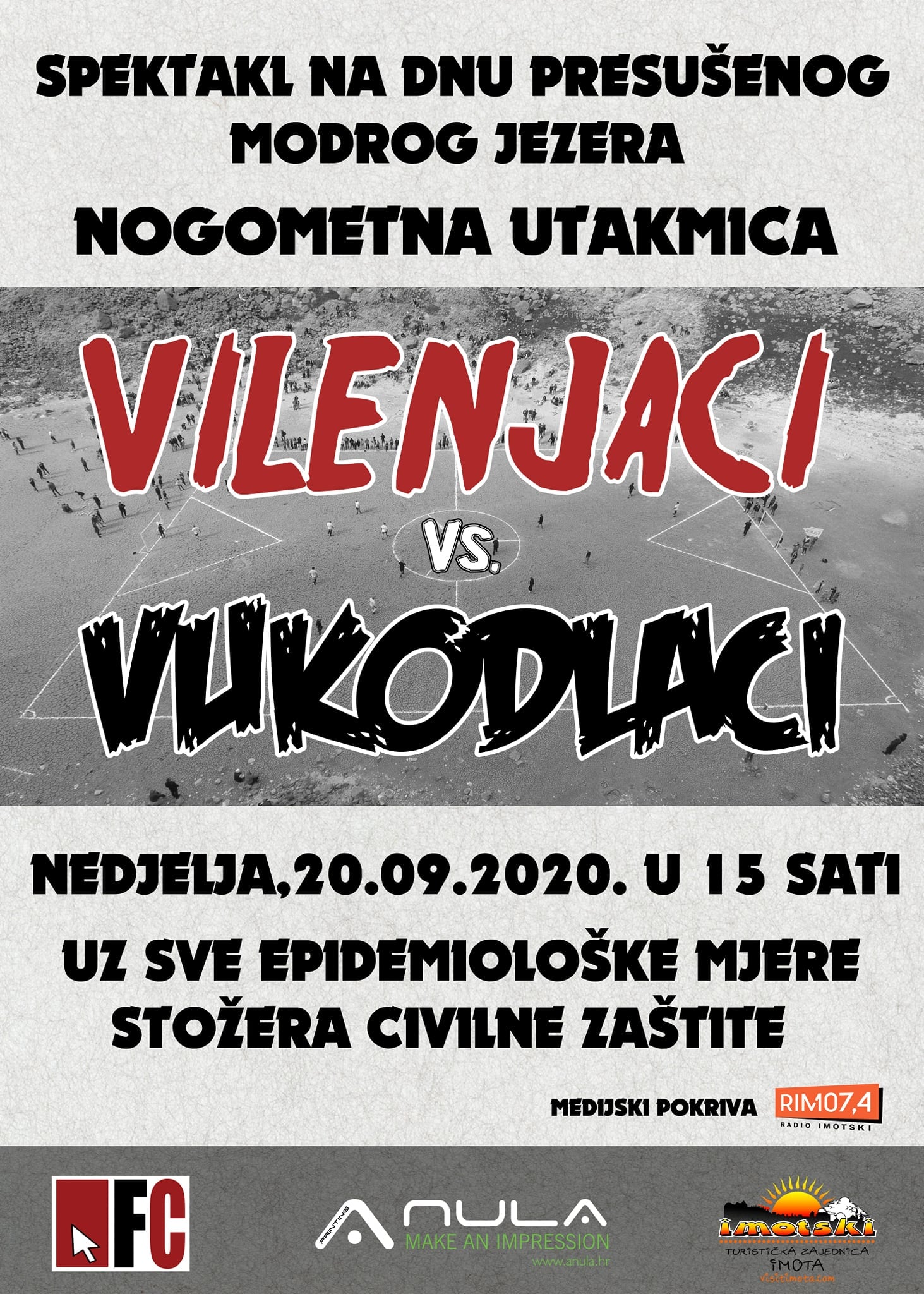
The funny thing is, however, that Imotski regularly features in global lists of the top 10 strangest football stadiums in the world, but for quite another football pitch.
That honour goes to the Gospin Dolac stadium, which is built into the Imotski rock, less than a football kick away from the Blue Lake - this is how it looks in more normal times.
If only the compilers of these lists knew the true secrets of Imotski's truly bizarre football pitch heritage.
For the latest travel info, bookmark our main travel info article, which is updated daily.
Read the Croatian Travel Update in your language - now available in 24 languages
Geopark 'Biokovo and Imotski Lakes' Launch Joint Initiative to Become UNESCO Geopark
June 4, 2020 - Geopark Biokovo and Imotski Lakes has launched an initiative to join the UNESCO Global Geopark network.
HRTurizam reports that UNESCO Geoparks are unique geographical areas of international geological significance governed by a holistic concept of protection, education, and sustainable development.
Precisely with the aim of protection, sustainable development and tourism, the Association Geopark Imotski Lakes and the Public Institution Nature Park Biokovo launched an initiative to establish "Geopark Biokovo-Imotski Lakes" to join UNESCO Global Geoparks.
One of the main ways to stimulate the economy and sustainable development of the future UNESCO Geopark is through geotourism, says Luka Kolovrat, president of Geopark Imotski Lakes, adding that by raising awareness and educating about the importance of geological heritage, UNESCO geoparks give the local community a sense of pride and strengthen their identification in the area they live.
“Geoparks attract a larger number of visitors with their activities and enable the launch of various production and service activities that contribute to the socio-economic development of the community. Not only geologically interesting places, but also various other ecological, archeological, historical and cultural sights contribute to geoparks, and they are supported and actively participated by local communities that know how to recognize and want to affirm their geological, historical and cultural heritage, mostly through the idea of geotourism. The opening of innovative crafts and new jobs encourages the creation of new sources of income within geotourism, strengthens the local community, and at the same time, the geological resources of the area remain protected," says Kolovrat.
The boundaries of the future Geopark Biokovo-Imotski Lakes have already been determined, and their total area is 431 km2. They cover the areas of the municipalities of Imotski, Proložac, Podbablje, Zmijavce, Lokvičići, Lovreć, Zagvozd and Runovići.
"Our joint initiative stemmed from the fact that the Biokovo Nature Park and the Imotski region form a geologically, geomorphologically and landscape-unique area of the Dinaric karst, and our wish is to use the potentials of both areas for the benefit of the local community," Kolovrat points out.
In general, when we talk about the area that will include the future Geopark Biokovo-Imotski Lakes, it is an area that in addition to attracting attention with its relief and geomorphological forms, or numerous karst phenomena, adorns a great wealth of flora and fauna including many endemic species.
In addition to the most attractive protected natural monuments and phenomena of world importance, the Red and Blue Lakes, there is also the Krčevac spring, which is currently the only confirmed locality of Proteus anguinus in the Imotski region. There is also the Zovnjača cave in the municipality of Podbablje, which was recently established as an important archaeological and biospeleological site.
Other sights include the Opačac spring, the Vrljika river, Ričice lakes, Galipovac, Knezovića and Mamića lakes, Prološko blato, Lokvičićka lakes, Dva oka and numerous other localities that were created during a long geological period by the tireless work of water. The ichthyofauna of the Imotski region is significant for several protected endemic species, and some of them are soft-mouthed trout (Salmothymus obtusirostris), Croatian roach (Rutilus basak), Imotski gaovica (Delminichthys adspersus), Squalius microlepis, and Cobitis.
So far, numerous systematic and complex geological surveys have been carried out, monitoring is being carried out, the public is being educated, brochures, guides, manuals, and educational materials have been printed.
The joint Geopark website is being developed, as well as the creation and marking geo-trails, and a joint Facebook page has been created, which is updated daily, points out Ivana Ćapin from the Association Geopark Imotski Lakes and adds: “Since we are aware of the great potential of the area which we live with all its features, together we embarked on this challenging project to become part of the international network of UNESCO Geoparks. As for our future joint activities, they are holding a presentation in November this year, then making a ten-year study with a management plan, and marking the geo-trail of the future Biokovo-Imotski Lakes Geopark. And most importantly, in the summer of 2021, the arrival of the Commission and evaluation is expected, and after that the accession to the network of world Geoparks under UNESCO protection," emphasizes Ćapin.
The network of UNESCO World Geoparks consists of areas of the geological and geomorphological heritage of international importance, while the goal of the UNESCO World Geoparks program is to protect geological, geomorphological and other values of geoparks and manage the area through education and implementation of activities following sustainable development goals and for the benefit of the local community.
We currently have two UNESCO Geoparks in Croatia: the Papuk Nature Park and the Vis Archipelago, and we will soon find out whether the Biokovo-Imotski Lakes Geopark will become the third UNESCO Geopark in Croatia.
More information can be found HERE
To read more about lifestyle in Croatia, follow TCN's dedicated page.
Police to Carry Out Probe Into Burning of Gay Couple Effigy at Imotski Carnival
ZAGREB, February 27, 2020 - The Split Municipal Prosecutor's Office has instructed the police to collect information concerning a criminal complaint Social Democrat MP Arsen Bauk filed against the organisers of a carnival procession in Imotski, where an effigy of a gay couple was set on fire this past weekend.
The effigy of a gay couple holding a "child" - SDP MP Nenad Stazić, with a five-pointed star on his forehead - was burned at the traditional carnival procession in Imotski last Sunday.
The criminal complaint against the organisers of the procession, the Bakove Svečanosti association, which is headed by Milivoj Djuka, was filed by SDP MP Bauk with the local police on Monday.
Sources at the Split prosecutor's office told Hina that police were expected to carry out a preliminary investigation and take other measures to collect information for a decision on the complaint while the prosecutor's office will make a decision within its remit once it receives the information requested.
More news about LGBT rights can be found in the Politics section.
Conservative or Liberal? Croatia, Full of Adriatic Coastal Diversity
February 26, 2020 - Images of a burning effigy of a gay couple during the Imotski Carnival went all around the world, shocking many. But this is only one part of the story. A look at conservative and liberal Adriatic coastal diversity.
What is Croatian cuisine? How do you define it?
The truth is that there is no national cuisine as such, more a group of (outstanding) regional cuisines, which have little in common apart from their excellence. The heavy meat dishes and river fish from Slavonia for example, differ greatly from the freshly grilled fish soaking in olive oil and accompanied by fresh blitva in Dalmatia.
And so too with the people who make up this beautiful land. Hard-working Slavonians and laid-back Dalmatians, more sophisticated types in the capital Zagreb to the more liberal, working-class cities such as Rijeka, while Istria has half an eye on Italy in terms of cuisine and culture. This diversity is one of the things I love most about living here, but it also makes it extremely difficult to tar Croatians with the same brush. For the regions are VERY different, at least in my opinion. Two very public events recently perhaps help to highlight that diversity. The first did not get as much international publicity as it perhaps deserved, while the second was a much smaller affair and went all over the globe.
I thought the opening day and night of Rijeka 2020, European Capital of Culture, was absolutely fantastic. There was an energy in Rijeka I had not come across during my time here, and I partied until 6am and ended up sleeping in the car. My experience (perhaps without finishing in the car) was mirrored by other foreigners I met along the way. You can read my comprehensive account here.
Had I been oblivious to the Croatian media, I might have concluded that everyone enjoyed a fantastic experience, but this is Croatia... The fact that the event was boycotted (there is no other word, in my opinion) by the then Croatian President, herself a Rijeka native, with other notable absentees including the Prime Minister and Speaker of the House, was an early indication of the politics involved.
Red Rijeka certainly did not hold back in celebrating its socialist history, and the showcasing of the Yugoslav flag in a prominent exhibition with no mention of the victims of the Tito regime caused outrage in the right-wing media in Croatia. The event and content was severely attacked on television and online portals and was the subject of lively debate for days. Red Rijeka is obviously comfortable with its direction, and Mayor Obersnel appeared dressed at Tito's wife Jovanka at this week's carnival, which did little to endear him to the right-wing sections of the country.
Meanwhile, in a little town in inland Dalmatia, another carnival story emerged, as the Imotski carnival burned an effigy of a gay couple carrying a child doll in the image of SDP MP Nenad Stazic, including the Yugoslav red star on his forehead. Stazic had supported the first gay foster couple recently. While the traditional carnival has always included the burning of a figure as satire, many thought the Imotski organisers had gone too far. National media condemnation was accompanied by international, with one portal comparing it to a 1935 carnival in Germany where the Jews were the subject of ridicule.
And so began another keyboard warrior battle between the two main sides of Croatian society. The liberals condemning the act, the conservatives broadly standing their ground and talking about the right of free speech. As an advert for a tourism country, it was appalling, and the many comments included several who said that this event meant that would cross Croatian off the bucket list. Which I can understand, but it got me thinking, especially after that totally different experience in Rijeka, which was as liberal as any Western city I have spent time in.
A little like that non-existent central Croatian cuisine, the regions of Croatia are very different. And Imotski is quite possibly the most entrenched in its ways and thinking in the whole country. How best to illustrate that diversity in a simple format?
I decided to take a look at the regional results on the 2013 national referendum, often referred to as the 'gay marriage referendum', when Croatia voted on the simple question - "Do you agree that marriage is matrimony between a man and a woman?"
Around 65% of voters decided that they did, and so the constitution was changed to ban same-sex marriage. But while two thirds may have voted for it on average nationally, the regional votes were VERY diverse, with Imotski one of just two places that voted more than 95% yes. Indeed, the area around Imotski included 5 of the 7 towns which voted more than 90% yes. All the Dalmatian counties from Zadar to Dubrovnik voted 74-77% yes - the traditional conservative heartland of Croatia.
By contrast, further up the coast, the voting was very different. The biggest opponents to the referendum were in Labin in Istria (71%). Rijeka was 59% against, while the Istrian peninsula was 58% against. I think it is fair to say that the likes of Rijeka and Istria are a little more liberal than large parts of Dalmatia. I am not saying that it is a good thing or a bad thing, just a statement of fact.
Having lived in Dalmatia for 13 years, I love the place, and I am also very fond of Imotski on the many times I have visited. But it is VERY conservative, traditional, right-wing and nationalistic. Quite how far to the right a friend found out several years ago on a visit there to a cafe which has since closed and is under new ownership - Caffe-Bar A D O L F.
"We were in a large group, 4-5 families on a road trip to Međugorje via Pisak, Runovići and Imotski... We sat down for coffee and juice and I was intrigued by the name of the bar. My wife said "Oh, no, I'm sure it's just a coincidence, that would be too crazy."
"So a few minutes later I go inside to the toilet and, sure enough, "Poglavnikovo pivo" (a reference to Ante Pavelic) and "Hitlerovo vino" proudly displayed on a shelf behind the bar.
"So I did my business in the toilet and we immediately left ..."
But you wouldn't find that in Rijeka or most of the rest of the country.
The Croatian Government put out a statement on the Imotski incident on its official website:
"The tradition of burning the carnival effigy usually consisted of a sort of humorous and mocking criticism of various events in Croatian society. That sort of carnival spirit can remain within the boundaries of satire when it 'judges' someone in power like the president, the prime minister, a mayor or some other politician, but by no means those who represent various minorities in Croatian society. That is not traditional, nor entertaining nor in the spirit of Croatian and European values. As such, we condemn that act," the government said.
"Our approach is that we oppose any form of hate speech and aggression - political, ideological, verbal and physical - just like any other act that offends the feelings of the Croatian people and contributes to divisions in society."
Croatia is as diverse and complicated as it is beautiful. Perhaps not all parts are for everyone, but there is certainly something for everyone with its Adriatic coastal diversity.
Croatia Gay Effigy Condemned: MP Files Criminal Charges Against Carnival
February 24, 2020 - MP Arsen Bauk SDP (Social Democratic Party) of Croatia has announced that he will file a criminal complaint against the organizers of the "Bakova povorka", which took place in the town of Imotski, at the local police station for burning an effigy of a gay couple. Zoran Milanović, President of Croatia, has demanded an apology from organizers and an appropriate response from the relevant legal institutions.
Numerous comments have appeared on social networks condemning the Imotski carnival (Bakova povorka), where an effigy of a same-sex couple holding a child was burned at the ceremony to widespread cheers. The child was presented in the form of SDP MP Nenad Stazić with a five-pointed star (Yugoslavia) on his forehead, according to Ana Roksandić/RTL Dnevnik on February 24, 2020.
Bauk to File Complaint Under Article 325 Croatia Criminal Code
Arsen Bauk has announced that he will file a criminal complaint against Milivoj Đuka, the organizer of the carnival parade, at the Imotski Police Station on Monday for the offense noted under Article 325 of the Criminal Code of Croatia.
There is a tradition of masks in Dalmatia, in which the people normally express their dissatisfaction with powerful political and social figures. However, the lynching of minority groups runs contrary to that tradition.
Croatia President Demands Appropriate Response for Shameful Event
Croatia President Zoran Milanović also responded to the "shameful event" on Monday morning.
"The symbolic burning of same-sex partners with a foster child in Imotski is a sad, inhumane and totally unacceptable act in the guise of the 'Bakova povorka' festivities. The organizers who staged this shameful event, in the name of tradition, deserve the strongest public condemnation because of the hatred they have demonstrated toward for others. Intolerance and inhumanity are not and will not be a Croatian tradition. I am seeking their public apology and the approptiate response reaction from the relevant institutions, especially as many children watched this event, thus witnessing the spread of hatred and inciting violence," he wrote on Facebook.
Former Croatia Prime Minister Jadranka Kosor reacted on Twitter:
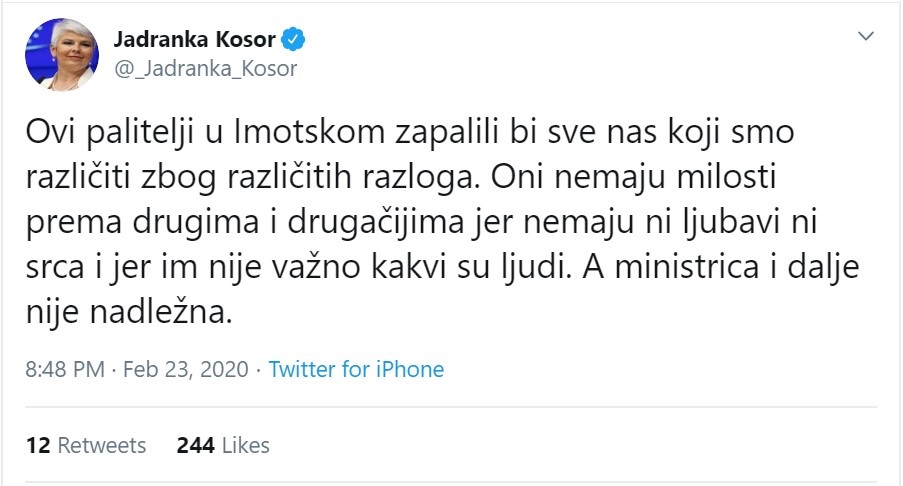
"These arsonists in Imotski would set fire to all of us who are different for various reasons. They have no mercy on others because they have neither love nor hearts and do not care what kind of people they are. And the minister is still incompetent," she wrote yesterday.
MP Bojan Glavašević also took to social networks to defend a same-sex couple, Ivo Šegota and Mladen Kožić, who want to adopt children.
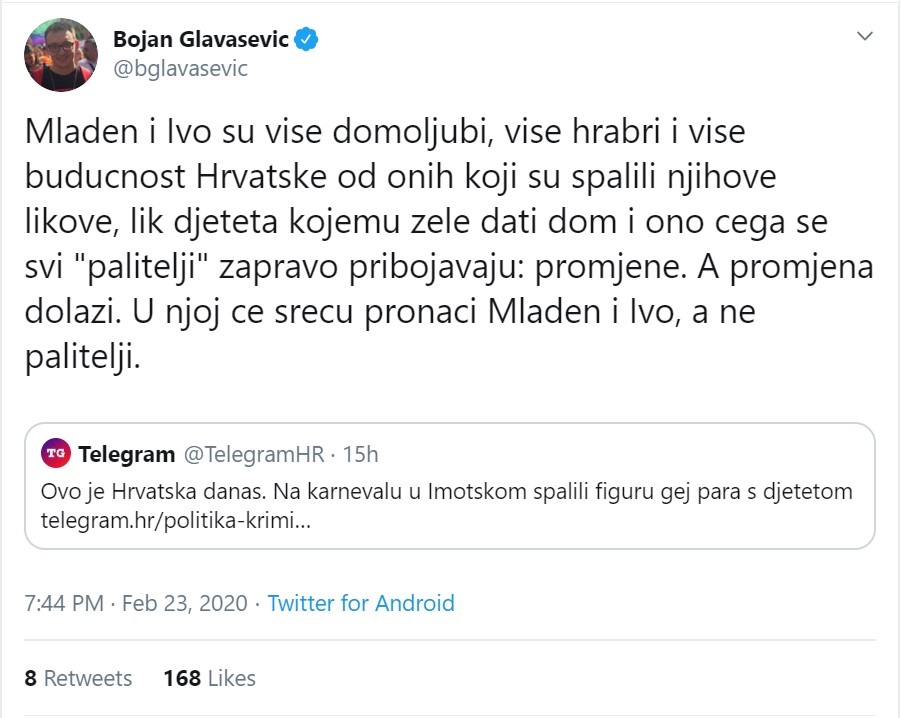
Croatia Gay Couple More Patriotic Than Imotski ‘Arsonists’
“Mladen and Ivo are more patriotic, more courageous, and more of a (positive) example for the future of Croatia than those who burned their characters, and the character of the child they wish to provide a home for. Change is what all these "arsonists" are truly afraid of. And change is coming. Within it, Mladen and Ivo will find happiness, not the arsonists,” he wrote in a Twitter post.
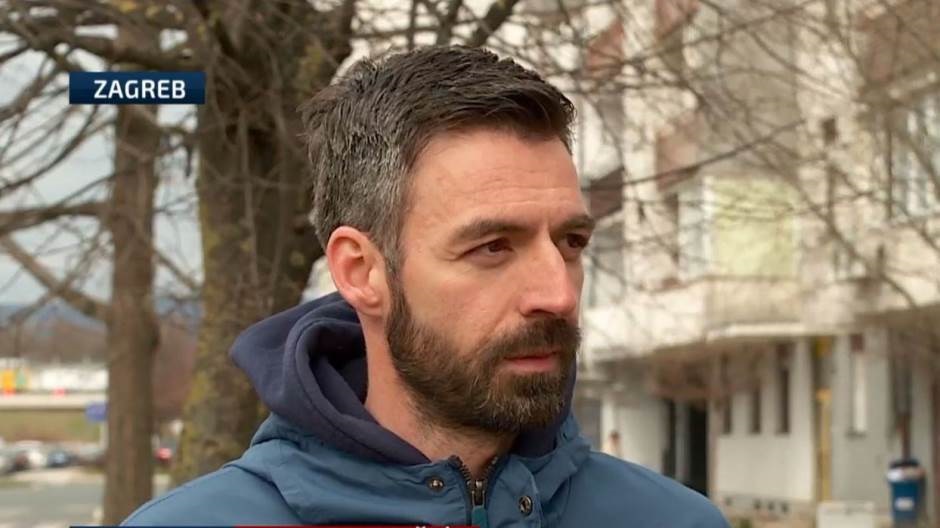
Kožić: 'I fear for all our friends who are already living with children in Croatia'
Mladen Kožić spoke to Hrvoje Krešić/N1 on Monday:
"This time I feel bad not only for myself, I am not afraid for either Ivo or myself, I fear for all our friends who are already living with children in Croatia," Kožić said.
"We know two fathers with a daughter in our first neighborhood and I feel bad for them because I cannot imagine how it must be for them now, and how they will explain to their children what exactly has happened," he added.
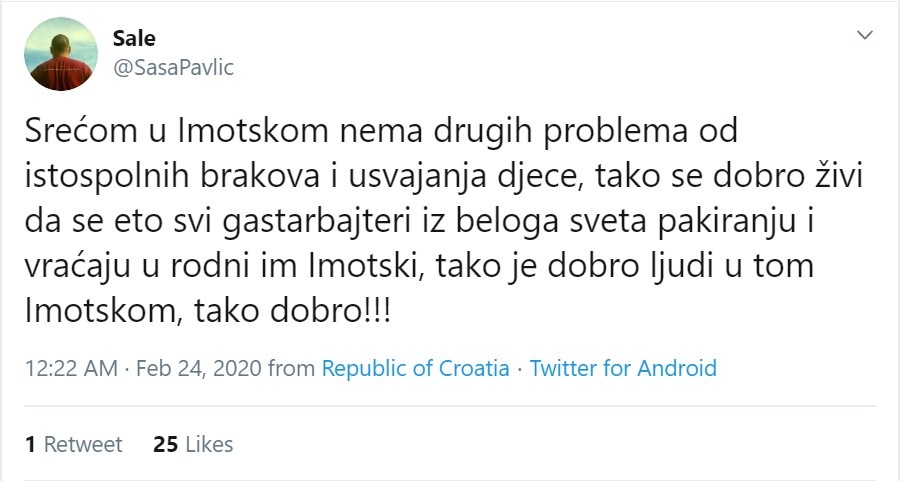
"Fortunately, there are no other problems in Imotski other than same-sex marriage and adoption of children, people are living so well there that all the gastarbeiters from this white world are packing and returning to their native Imotski, the people in Imotski have it so good, so good !!!", one Twitter user observed sarcastically. Milivoj Đuka, the parade's organizer, spoke to Dnevnik/HRT about the mass exodus from his hometown on June 21, 2015.
Interview with Đuka begins at 1:05.
Young Croatians Fleeing Imotski, Living Among Same Sex Couples Abroad
Thousands of young Croatians are fleeing to countries like Ireland, Sweden, Denmark, Germany and Austria where gay marriage and adoption are legal, and are living among openly gay and lesbian couples with children.
Another user emphasized that, according to carnival tradition, culprits should be burned for adverse behavior, not for adopting a child.
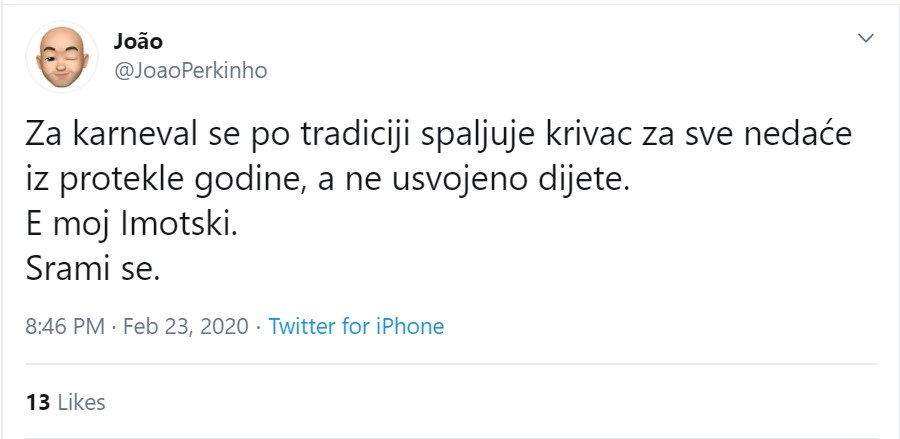
“According to tradition the carnival is traditionally an event to set fire to the culprit for all the troubles of the past year, not an adopted child.
My Imotski. Shame on you,” the user responded.
Act of hate speech?
Another user wondered if the gay couple effigy burning at the Imotski carnival was an act of hate speech.
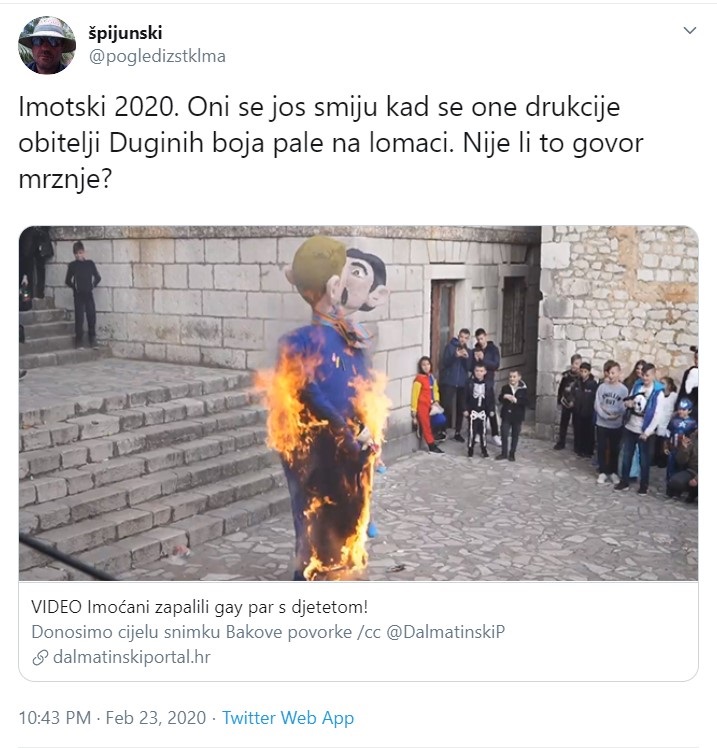
“Imotski 2020. They are still laughing when these alternative families of Rainbow colors fall into shambles. Isn't this hate speech?” the Twitter user asked.
The effigy of the gay couple is set on fire at 1:41:15 | Boško Ćosić Photography
See yesterday's Total Croatia News article about the effigy burning here. Follow our Politics page, Lifestyle page and this page for updates on this story and the state of LGBT rights in Croatia.


